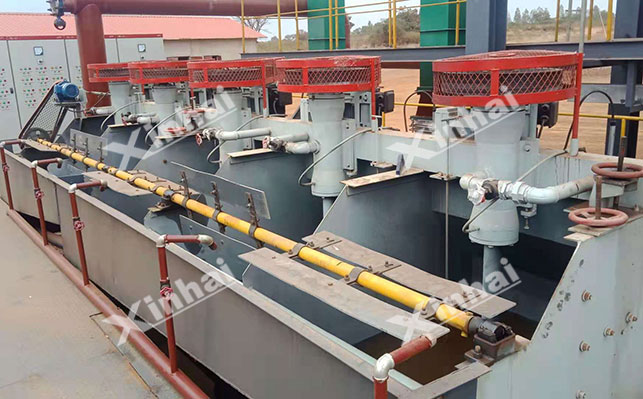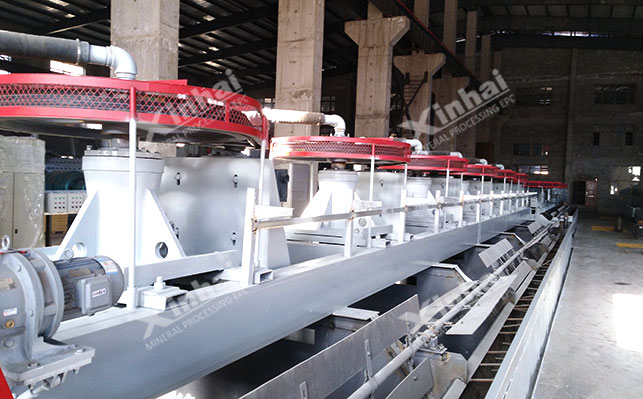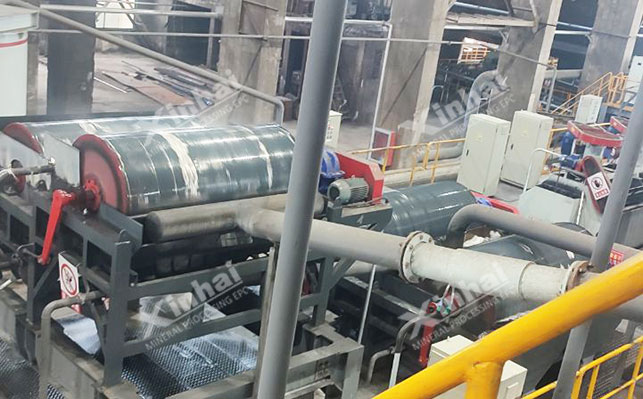
15311826613
Click to add WeChatAfter a long period of development, the global mining industry has reached an astonishing scale of tailings stockpiles. According to statistics, the cumulative stockpiles of tailings in the world exceed 500 billion tons, and the precious metal resources contained in them are of great value. Taking gold as an example, the average grade of gold in global tailings is about 0.3-0.8g/t. According to the current gold price, the potential economic value exceeds 100 billion US dollars. Therefore, tailings are not waste, but an "invisible mine" that needs to be developed urgently. In addition to gold, what other minerals can be recycled in tailings? This article will mainly focus on the reselection of precious metals in tailings, including methods for reselecting precious metals in tailings and types of reselected precious metals.
The types of precious metals in tailings usually refer to gold, silver and platinum group metals. Among them, the occurrence state of gold minerals is complex, including free gold, encapsulated gold and solid solution gold. Free gold exists as single particles and is relatively easy to recover; encapsulated gold is often encapsulated by minerals such as quartz and sulfides, and needs to be dissociated by grinding and other means; solid solution gold exists in the form of ions in the lattices of other minerals, which is difficult to recover. Silver minerals mainly exist in the form of argentite, argentite, native silver, etc., and are often associated with sulfide minerals such as lead, zinc, and copper. The content of platinum group metals (PGM) in tailings is low, mainly dispersed in minerals such as nickel and chromium in the form of sulfides and arsenides. The distribution pattern is complex, and special processes are required for recovery.
According to the different properties of gold tailings ore, they can be divided into primary gold tailings and oxidized gold tailings. There are differences in the reselection technology of the two types of gold tailings.

Primary gold tailings: Using flotation enhancement technology, new collectors (such as thioglycolic acid derivatives) have stronger selectivity and capture ability for gold minerals, and the adjustment agent is used to optimize the pulp environment, which can significantly improve the gold flotation recovery rate. The combined gravity-flotation process first recovers coarse gold by gravity-separation, and then flotates the gravity-separation tailings to recover fine gold. It can give full play to the advantages of the two methods and improve the comprehensive recovery rate of gold.
Oxidized gold tailings: Non-cyanide leaching technologies such as thiosulfate leaching and thiourea leaching overcome the toxicity problem of cyanide and perform well in the treatment of oxidized gold tailings. The resin adsorption process uses the selective adsorption of gold ions by ion exchange resins to efficiently recover gold from the leachate, with the characteristics of fast adsorption speed and high selectivity.
In the silver-lead-zinc combined tailings, silver is mainly found in galena and sphalerite. The reselection process needs to use the difference in floatability between silver and lead-zinc minerals to achieve separation.

Recovery of silver in lead-zinc tailings: Selective flotation uses thioglycolic acid reagents, which can preferentially float silver-containing minerals, inhibit lead-zinc minerals, and achieve silver enrichment. Chlorination roasting - leaching process converts silver into soluble silver chloride through roasting, and then recovers silver through leaching, replacement and other processes. It is suitable for treating silver-containing sulfide tailings.
Silver recovery in copper tailings: Ammonia cyanide system leaching uses the synergistic effect of ammonia water and cyanide to improve the leaching efficiency of silver; electrochemical extraction achieves selective dissolution and deposition of silver by controlling the electrode potential, which has the advantages of high extraction efficiency and low pollution.
In platinum group-nickel-chromium associated tailings, platinum group metals have close chemical and physical connections with nickel and chromium minerals, and need to be recovered by magnetic separation, flotation, chemical leaching and other methods.

PGM recovery in nickel tailings: The magnetic separation-flotation combined process first uses magnetic separation to separate magnetic minerals containing platinum group metals, and then further enriches them through flotation. High-pressure acid leaching technology uses strong acid solution to dissolve metals such as nickel and iron, so that platinum group metals are enriched in the leaching residue for subsequent extraction.
PGM recovery from chromite tailings: Plasma smelting enrichment uses high-temperature plasma to melt chromite tailings, and platinum group metals form alloy phases at high temperatures to achieve enrichment. Biosorption technology uses the specific adsorption of platinum group metals by microorganisms to recover platinum group metals from tailings leachate, which is a green and efficient recovery method.
In carbonaceous tailings, carbonaceous materials will adsorb gold leaching agents, resulting in the phenomenon of "gold robbery". The oxidation pretreatment-flotation combined process first destroys the carbonaceous structure through oxidative roasting or chemical oxidation to eliminate its adsorption effect on gold, and then uses flotation to recover gold, effectively solving the problem of carbonaceous gold robbery.
The treatment of high-sulfur tailings requires the coordinated recovery of sulfur resources and precious metals. The roasting process can convert sulfur into sulfur dioxide for acid production; at the same time, precious metals are enriched during the roasting process, which is convenient for subsequent recovery. In the treatment of roasting flue gas, the use of efficient precious metal collectors can recover the precious metal particles entrained in the flue gas and improve resource utilization.
For very fine tailings, ultrafine grinding-carrier flotation technology can be used. The tailings are first ground to ultrafine particles to fully dissociate the precious metals, and then the carrier minerals (such as pyrite) are used to adsorb fine precious metals to achieve flotation recovery. Selective flocculation sorting method can also be used. By adding flocculants, fine precious metals are agglomerated into larger particles, which is convenient for subsequent sorting, effectively solving the problem of precious metal recovery in extremely fine tailings.
Tailings re-selection precious metal technology has opened up a new path for mineral reuse, which can not only achieve effective resource recovery, but also bring better economic and environmental benefits. With the continuous innovation and improvement of technology, tailings re-selection will become an important support for the sustainable development of the mining industry. Xinhai Mining has many years of rich experience in tailings re-selection technology and has completed many tailings re-selection and transformation projects. If you have any needs, please feel free to consult.